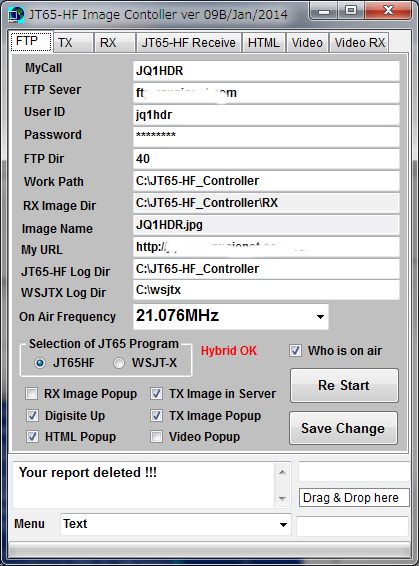

(While signal reports are not required for a VHF+ contest exchange which consists of grid squares, the reports convey useful information and come “for free” as an integral part of the structured message sequences of all WSJT(-X) modes.) It also offers the relatively new modes MSK144, for meteor scatter, and FT8, described further below.
#Jt65 hf or wsjtx software#
Like its predecessors, the currentlysupported software package WSJT-X supports both styles of signal reports. JT65 QSOs on the HF bands have always used numerical signal reports like “-12” or “R-06,” rather than the terse “OOO” or “RO” often used in EME contacts. The HF community discovered JT65 and began using it on the various HF bands because you could make contacts that otherwise were not possible on traditional modes due to noise and low signal levels. This boosts your grid count and your score. Why is this software so important to VHF+ contesting? Because with this software and these modes, you can work stations that you could not ordinarily work using CW or SSB.

This article discusses specifics of using these modes during VHF+ contests. For EME, JT65 had a similar and dramatic effect, enabling many modest stations to communicate “off the Moon.” FSK441, now obsolete, revolutionized meteor scatter operations and has been replaced by MSK144 which is the current standard. The first meteor scatter mode, FSK441, was optimized for very short “bursty” signals, which is typical of a signal reflected from an ionized meteor trail.
#Jt65 hf or wsjtx manual#
(The User’s Manual is available for downloading at /pulsar/k1jt/wsjtx-doc/wsjtx-main-1.7.1-devel.html.) WSJT-X includes software that implements several different types of communication, but the two most important to VHF+ contesting are intended for meteor scatter and EME. His suite of programs has revolutionized weak-signal VHF+ operating and the importance of Joe’s work cannot be overstated. Joe has been a serious VHF operator for many years. Joe Taylor, K1JT, is a Professor of Physics (retired) at Princeton. The signals are generated and decoded by computers and sound cards.

The WSJT (Weak Signal Joe Taylor) suite is a package of software designed for working very weak signals using digital signal processing. The only exceptions are EME contests in which the signal reports ‘OOO’ (capital O) or ‘RO’ are exchanged. VHF+ contests exchange grid square (“Grid”) instead of a numeric signal report. The most successful strategy is to assess conditions to use the bands and modes that give you the best score overall.įor a valid contact to occur, each station must send and receive both call signs, a report in a mutually agreed format, and an acknowledgement (roger). ARRL VHF+ contests on the VHF, UHF, and microwave bands are scored by multiplying the total QSO points by the sum of the number of unique grid squares worked per band. Good Luck and 73 - Marshall K5QEĪs in any contest, the idea is to make a good score according to the rules. If as VHF+ ops, we all “get on the same page,” everyone will make more contacts and have more fun. The intent is to be informative and educational.
#Jt65 hf or wsjtx how to#
This article explains why and how to configure your WSJT digital mode software for successful and effective VHF+ contesting. VHF + Contesting and the Digital Modes By Marshall Williams,K5QE


 0 kommentar(er)
0 kommentar(er)
